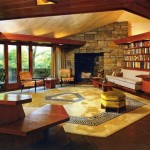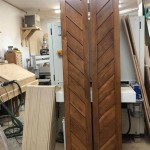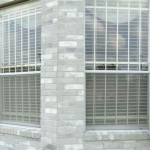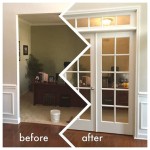6-Panel Wood Interior Doors: Benefits, Styles, and Installation
Interior doors are integral elements of any building, contributing significantly to aesthetics, privacy, and functionality. Among the various options available, the 6-panel wood interior door stands out as a popular and enduring choice. Its classic design, versatility, and inherent benefits make it a favored selection for homeowners and builders alike. This article delves into the advantages, diverse styles, and installation considerations associated with 6-panel wood interior doors.
Benefits of 6-Panel Wood Interior Doors
6-panel wood interior doors offer numerous advantages that contribute to their enduring popularity. The benefits span aesthetic appeal, functional characteristics, and long-term value.
Timeless Aesthetic: The 6-panel design is a classic and versatile style that complements a wide range of interior design schemes. Whether the aesthetic is traditional, contemporary, or transitional, the 6-panel door integrates seamlessly. The defined panels provide visual interest without being overly ornate, making it a suitable choice for various architectural styles.
Enhanced Privacy and Sound Insulation: Solid wood doors, including 6-panel designs, offer superior sound insulation compared to hollow-core alternatives. The density of the wood helps to dampen sound transmission between rooms, creating a more private and peaceful environment. This is particularly beneficial in bedrooms, home offices, and entertainment spaces.
Durability and Longevity: Wood doors, when properly maintained, are highly durable and can last for decades. The solid construction of 6-panel wood doors ensures structural integrity and resistance to wear and tear. They are less prone to damage from impacts and general use compared to doors made from less robust materials.
Increased Home Value: The installation of high-quality wood doors can increase the overall value of a property. Potential buyers often perceive wood doors as a sign of quality craftsmanship and attention to detail. The classic design of 6-panel doors further enhances their desirability and contributes to the home's perceived value.
Customization Options: Wood doors are highly customizable, allowing homeowners to select the type of wood, finish, hardware, and panel detailing that best suits their preferences and the overall design of their home. This level of customization ensures that the doors seamlessly integrate into the existing aesthetic and reflect the homeowner's individual style.
Environmental Considerations: Wood is a renewable resource, and many manufacturers now offer doors made from sustainably harvested wood. Choosing wood doors from responsible sources can contribute to environmentally conscious building practices. Furthermore, wood doors can be refinished or repurposed, extending their lifespan and reducing waste.
Styles and Variations of 6-Panel Wood Interior Doors
While the basic 6-panel design remains constant, there are several variations and stylistic options available to accommodate different preferences and architectural styles. These variations primarily involve the type of wood, finish, and hardware used, as well as subtle differences in panel detailing.
Wood Species: The type of wood used significantly impacts the appearance and characteristics of the door. Popular choices include:
- Pine: A softwood that is relatively inexpensive and easy to work with. Pine doors often feature a rustic or casual aesthetic.
- Oak: A hardwood known for its durability and distinctive grain pattern. Oak doors are a classic choice that complements traditional and contemporary styles alike.
- Maple: A hardwood with a smooth, uniform grain and a lighter color. Maple doors are often chosen for their clean, modern look.
- Mahogany: A hardwood with a rich, reddish-brown color and a fine grain. Mahogany doors exude elegance and sophistication.
- Cherry: A hardwood with a warm, reddish-brown color and a smooth grain. Cherry doors are known for their timeless beauty and durability.
Finishes: The finish applied to the door can dramatically alter its appearance. Common finish options include:
- Paint: Painted doors offer a clean, modern look and can be easily customized to match any color scheme.
- Stain: Stained doors highlight the natural grain and beauty of the wood. Stains are available in a wide range of colors, from light to dark.
- Clear Coat: A clear coat protects the wood while allowing its natural color and grain to shine through.
Panel Detailing: While the 6-panel design is standard, subtle variations in panel detailing can further customize the look of the door. Options include:
- Raised Panels: Raised panels add depth and dimension to the door.
- Flat Panels: Flat panels provide a clean, minimalist look.
- Beveled Panels: Beveled panels feature angled edges that add visual interest.
Hardware: The hardware chosen for the door, including the doorknob, hinges, and strike plate, can significantly impact its overall style. Options range from traditional brass hardware to sleek, modern stainless steel hardware.
Glass Inserts: While traditionally solid, 6-panel doors can be modified to include glass inserts in one or more of the panels. This allows for natural light to filter between rooms while maintaining a degree of privacy. The glass can be clear, frosted, or decorative, depending on the desired effect.
Installation Considerations for 6-Panel Wood Interior Doors
Proper installation is crucial to ensure the optimal performance and longevity of 6-panel wood interior doors. While DIY installation is possible, professional installation is often recommended, particularly for homeowners who lack experience with carpentry or door installation.
Pre-hung vs. Slab Doors: Interior doors are available in two main types: pre-hung and slab. Pre-hung doors come already installed in a frame, making the installation process simpler and faster. Slab doors are just the door itself and require the installer to build or modify the existing frame to fit the door. Pre-hung doors are generally recommended for new construction or when replacing an entire door unit, while slab doors are suitable for replacing an existing door within an existing frame.
Measuring the Door Opening: Accurate measurements are essential for a successful installation. The width, height, and thickness of the door opening must be precisely measured to ensure a proper fit. It is crucial to account for any irregularities or inconsistencies in the opening before ordering or installing the door.
Preparing the Door Frame: The door frame must be square, plumb, and level to ensure the door swings smoothly and closes properly. Any necessary adjustments or shimming should be done before installing the door. The frame should also be free of any debris or obstructions that could interfere with the door's operation.
Hanging the Door: When installing a pre-hung door, the frame is typically secured to the wall studs using shims and screws. The door is then hung on the hinges, and any necessary adjustments are made to ensure it swings smoothly and closes tightly. When installing a slab door, the hinges must be mortised into both the door and the frame, requiring more precise measurements and carpentry skills.
Installing the Hardware: The doorknob, strike plate, and other hardware are installed after the door is hung. The positions of these components must be accurately marked and drilled to ensure proper alignment and function. The hardware should be securely fastened to the door and frame to prevent loosening or damage.
Finishing Touches: After the door is installed and the hardware is in place, any necessary finishing touches should be applied. This may include painting or staining the door, installing trim or molding around the frame, and caulking any gaps or cracks.
Professional Installation: While DIY installation is an option, professional installation offers several advantages. Professional installers have the experience, tools, and expertise to ensure a proper and efficient installation. They can also identify and address any potential issues that may arise during the process. Hiring a professional installer can provide peace of mind and guarantee a high-quality result.

Benefits Of A Wood Door Woodgrain

6 Paneled Interior Doors Paint Or Replace

Masonite 30 In X 80 6 Panel Textured Hollow Core Primed Composite Interior Door Slab 16474 The Home Depot

8 Types Of Wooden Doors You Should Consider For Your Firm

How To Select The Right Interior Door Style Prestige Painting Gta

Laminated Custom Interior Doors Fine Homebuilding

Masonite 30 In X 80 6 Panel Textured Hollow Core Primed Composite Interior Door Slab 16474 The Home Depot

Interior Wooden Doors Top Tips On Care And Maintenance

How To Choose The Right Interior Doors Rona

Everything You Need To Know About Mdf Doors Manhattan Door
Related Posts








